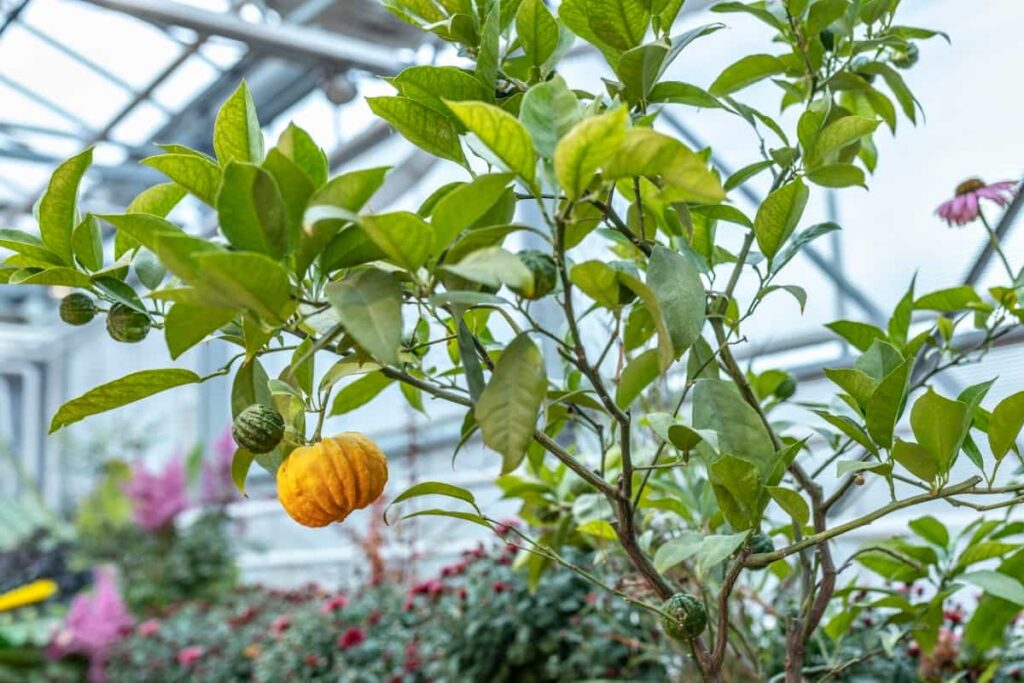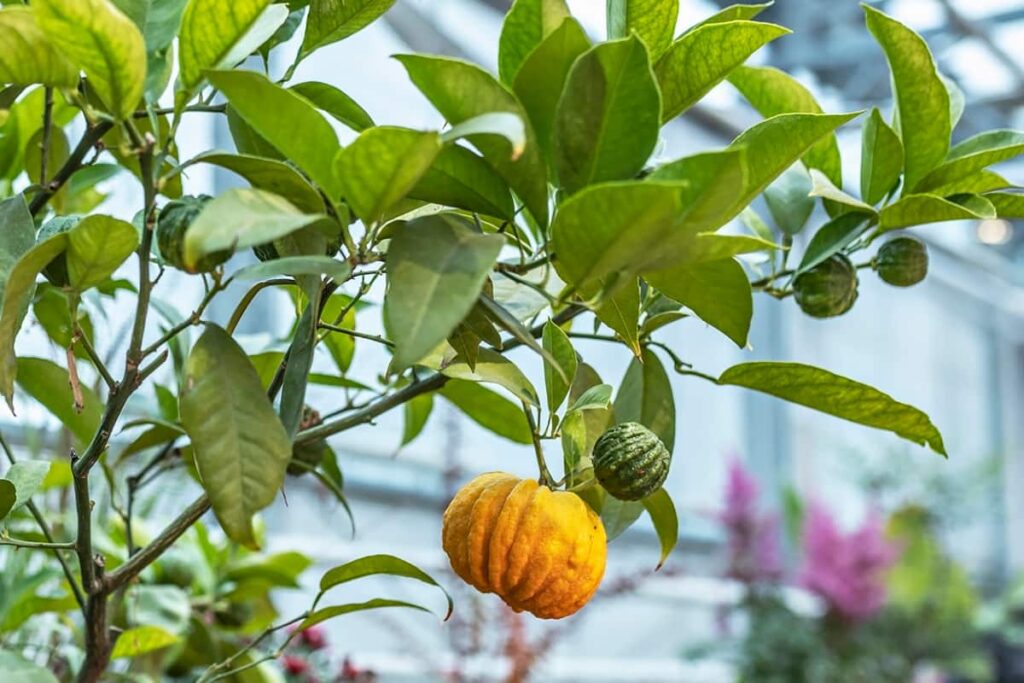Mastering Citron Fruit Growing: Your Practical Guide to Juicy Success

Forget everything you’ve read about “easy citrus” and let’s get real: growing citron (Citrus medica) is a hands-on, heart-in project that rewards the devoted with something truly rare. I still remember my first taste of candied citron peel—aromatic, bright, utterly different from lemon or orange. It was a revelation, and it set me on a mission to grow my own. Over the past decade, I’ve coaxed these ancient fruits through windstorms, root rot, and more than one failed experiment with container growing. This isn’t just another gardening how-to; this is your passport to citron mastery—packed with research-backed methods, lessons learned the hard way, and expert insights gleaned from passionate growers worldwide.

The Ultimate Guide to Growing Citron Fruit: From Planting to Harvest (And Every Curveball in Between)
What Makes Citron So Special?
Before we dig in—literally—let’s talk about why you’d want to grow citron when lemons and oranges are everywhere. For starters: citron is living history. It predates most modern citrus by centuries (some scholars say millennia), having flavored ancient feasts from Rome to Persia. Its thick rind is prized for candying, infusing spirits (ever tried homemade cedrat liqueur?), perfuming rooms—and even holding ceremonial significance in cultures like Judaism.
But here’s what really hooks people: nothing else smells quite like fresh citron zest. Seriously, break open a ripe fruit on a chilly autumn morning and the aroma alone makes every bit of effort worthwhile.
Citron Fundamentals: What You Need to Know Before You Plant
Real-World Climate Wisdom
Citron isn’t forgiving of cold snaps or neglectful watering routines—I learned that the hard way during my first year in North Carolina when an unexpected frost wiped out three saplings overnight! The basics:
- Ideal Zones: USDA 9–11 are best; outside those? Prepare for serious winter protection.
- Sunlight: South-facing exposure with 6–8 hours daily is non-negotiable.
- Soil: Sandy loam with pH 5.5–6.5; amend heavy soils ruthlessly or use containers.
- Water: Deep but infrequent; never soggy—citron roots hate wet feet more than any other citrus I’ve grown.
Choosing Your Variety
Not all citrons behave—or taste—the same! Here’s my quick field guide:
- ‘Etrog’: Revered for ritual use; elongated, bumpy fruit.
- ‘Diamante’: Italian favorite for candied peel.
- ‘Buddha’s Hand’: Wildly fingered, intensely aromatic—my personal favorite for infusing vodka!
- ‘Corsican’: Smoother skin; less common but worth seeking out for flavor depth.
If you’re after culinary adventure, ‘Diamante’ and ‘Buddha’s Hand’ offer more versatile uses (and spark jaw-dropping reactions from guests).
The Anatomy of Success: Step-by-Step Citron Cultivation
1. Sourcing Plants: Why Grafted Saplings Beat Seeds
I’ll say it straight: skip seeds unless you relish waiting half a decade for unpredictable fruit! Grafted saplings produce reliably within 2–3 years and carry disease resistance tailored to your region if sourced smartly.
Pro tip: My go-to supplier has been Four Winds Growers (in the US); in Europe, I recommend Citrus Center Europe—they know their stuff and ship healthy plants with robust rootstocks.

2. Site Prep & Container Tactics
In-Ground Planting
After losing two trees to clay soil waterlogging back in 2017, I now dig holes twice as wide as the root ball and blend native earth with coarse sand plus composted manure before planting. If your soil clumps when squeezed? Add more drainage material until it crumbles easily in your hand.
Container Growing
City dweller? No problem! My breakthrough came using squatty 20-gallon nursery pots filled with Fafard Citrus Mix plus extra perlite (about 25% by volume)—the difference in drainage was dramatic compared to standard mixes.
Unexpected twist: On balconies facing north or east where sunlight's weaker, supplement with LED grow lights—I've seen up to 40% better growth rates during gloomy winters.
3. The Planting Moment
Plant at dawn or dusk—not midday—to minimize transplant shock:
- Tease roots gently loose before setting into amended soil.
- Ensure graft union stays above ground level (burying it risks rot).
- Water deeply right away but don’t drown it—a thorough soak until water drains out is perfect.
- Mulch lightly around base (cedar bark works wonders), keeping mulch at least two inches away from trunk—lesson learned after one bout of collar rot!
First-Year Care: Setting Up Lifelong Health
Your tree’s first year sets its destiny:
- Stake loosely so wind won’t whip young trunks—but let them sway enough to build strength.
- Hold off on fertilizer until new growth appears post-transplant shock (usually four weeks). When ready? Use Espoma Citrus-Tone once monthly through late summer.
- Check soil moisture by finger test—not calendar! If top inch is dry but lower levels are damp, wait another day or two before watering again.
Personal confession: My earliest failure came from “loving” my tree too much—that is, watering every time I walked past! Resist the urge; overwatering kills faster than drought here.
Rookie Mistakes That Nearly Ruined My First Orchard
Let me spare you some pain:
-
Overwatering Kills Fast
- Symptoms: Yellow leaves dropping en masse; roots smell swampy.
- Fix: Repot into drier mix immediately; cut away any mushy roots; reduce watering schedule sharply.
-
Planting Too Deep
- Grafts must stay above soil line! Bury them and you risk sudden dieback months later—I lost two ‘Etrog’ this way before catching on thanks to advice from an old Sicilian grower who insisted “roots want air.”
-
Ignoring Pest Scouts
- Aphids love tender new shoots—you’ll spot sticky “honeydew” long before you see bugs themselves.
- Countermove: Weekly neem oil sprays at dusk keep infestations at bay without harming pollinators.
-
Frost Complacency
- One unprotected night = disaster below 40°F/4°C!
- Solution: Keep moving blankets handy if outdoors; wheel containers inside when temps drop unexpectedly (wheels on planters are game-changers).
-
Neglecting Pruning
- Dense canopies breed fungal issues fast—especially after rainy summers like mine in 2021!
- Each spring I now shape trees into open vases so air/sun flood every branch.
Level-Up Tactics: From Hobbyist To Expert Grower
Microclimate Magic
If your climate borders on marginal:
- Build stone walls behind trees to trap daytime heat (“thermal mass”—it works!)
- Mulch dark stones around base for extra warmth
- Erect temporary plastic tunnels during shoulder seasons—I fashioned mine from PVC hoops + greenhouse film for under $50 total
Advanced Grafting
Want multiple varieties on one tree? Try whip-and-tongue grafts onto sturdy trifoliate orange rootstock (‘Flying Dragon’). Not only does this dwarf your tree for easier harvests—it shrugs off many local diseases too!

Fertilizer Tweaks
Switch formulas during bloom set—a potassium-rich blend like Jack’s Classic Blossom Booster gives noticeable bump in flower retention/fruit size versus generic NPK blends alone.
Research note: A UC Davis study found micronutrient sprays during early growth reduced leaf yellowing by nearly half compared to granular feeds alone—a trick I now swear by each spring!
Strategic Pollination
Indoor/out-of-region growers: mimic bees using a soft watercolor brush between flowers each morning while blooms last—you’ll double your fruit set versus leaving things solely up to chance indoors!
Tools & Resources That Actually Matter
Forget fancy gadgets—the essentials:
| Tool | Why You Need It | Insider Tip |
|---|---|---|
| Felco #2 Pruners | Clean cuts = less disease | Clean blades w/70% alcohol often |
| Dramm Water Meter | Avoids guesswork (especially container) | Calibrate monthly |
| Fafard Citrus Mix | Best drainage + nutrition combo | Add extra perlite if humid climate |
| Neem Oil | Safe pest control | Spray every week during spring |
| Soil pH Meter | Catch acid drift early | Test quarterly |
Online communities have saved my harvest more than once—Reddit r/citrus is full of practical hacks (“bottom-watering saves time!”) while Ourfigs.com has veteran Mediterranean growers who know every quirk citron throws at you.
Case Studies From Real Gardens
Maria’s Balcony Triumph – London
Maria emailed me photos last winter—a thriving Buddha’s Hand nestled beside her sliding glass door! She swears by daily misting + LED supplementation (“London sun is a myth!”). Her biggest challenge? Spider mites indoors—but regular neem wipes keep foliage lush year-round now.
Ravi’s Rocky Breakthrough – Mumbai Outskirts
Ravi dug trenches lined with river sand among his family’s bouldery plot after reading Mediterranean orchard manuals online—and credits cow manure tea for his Etrog trees' glossy leaves (“old ways still work best”). He now supplies local bakeries each festival season!

Isabelle’s Cold Climate Hack – Seattle
After killing three lemon trees outdoors (“heartbreaking!”), Isabelle moved her Corsican citron into a rolling container system parked near south-facing windows all winter—no casualties since! Her advice: “Never underestimate pot size—you’ll regret skimping.”
Each story underscores this truth: there isn’t just one way forward—but attention and adaptation always win out over shortcuts or wishful thinking!
Troubleshooting Table — Problems Solved Fast
| Problem | Likely Cause | Solution |
|---|---|---|
| Yellow Leaves | Overwatering/Nutrition gap | Dry out soil/fertilize monthly |
| Wilting w/ Wet Soil | Root Rot | Repot/prune dead roots/don't overwater |
| Black Mold | Aphids/Scale | Treat pests/wash honeydew off |
| Dropped Fruit | Uneven Water | Maintain steady moisture |
| Leaf Curl | Mites/Aphids | Neem oil spray/repeat weekly |
| No Flowers/Fruit | Low light/youth | Move plant/feed/patience |
Remember: sometimes symptoms overlap—don’t panic if leaves yellow briefly after cold spells; warmth brings recovery fast!
Your Action Plan — The Enthusiast's Roadmap To Homegrown Citron Glory
- Pick Your Variety & Source Smartly: Decide based on end-use (candied peel? Liqueurs?) then order robust saplings—not seeds—from trusted nurseries attuned to your zone.
- Prep Like A Pro: Amend ground heavily OR invest in big containers + premium citrus mix + added perlite/drainage layers.
- Plant With Precision: Set roots flush—not deep—with careful mulching strategy that keeps bark dry but roots moist.
- Master Water/Fertilizer Rhythm: Feel topsoil before each drink; fertilize March–September only when active growth shows up strong green tips/leaves.
- Defend Against Pests/Frost: Inspect weekly; treat aphids/scales early; cover/protect from unexpected chills without delay!
- Prune To Perfection Each Spring: Open up center canopy ruthlessly—even if it feels drastic at first—the results will astonish you come harvest time!
- Celebrate Every Milestone: Snap photos/share progress online or locally—it builds motivation AND attracts great advice/community support!
Next Steps — Beyond Basics To True Mastery
Here’s what separates dabblers from devotees:
- Set reminders for weekly check-ins so problems never get ahead of you;
- Join local or online groups—you'll shortcut years of trial-and-error learning;
- Experiment boldly—even failed attempts yield invaluable data;
- Keep detailed notes/photos across seasons—it reveals patterns unique to YOUR microclimate/home setup;
- Share successes AND failures generously—the next generation of growers needs both stories equally!
And finally…when that first knobby golden fruit ripens beneath your window—or bursts its scent open across your kitchen counter—you’ll understand why generations have cherished this enigmatic citrus above all others.
Grow boldly…and may every harvest deepen your connection not just with plants—but with tradition itself!
Happy growing—from one enthusiast to another,
[Your Name]



